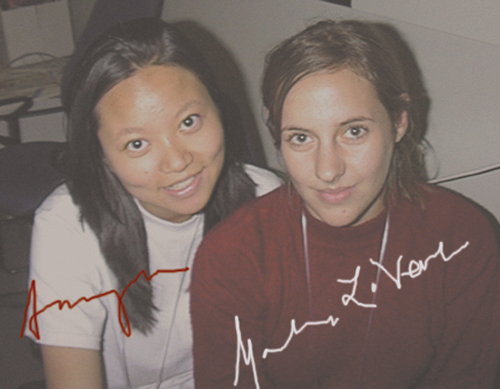Synchrotron Radiation Laboratory
Amy
Wu
Summer
Internships in Science and Engineering, Stanford Linear Accelerator Center,
Stanford, CA
July
5, 2000

Amy
Wu
Summer
Internships in Science and Engineering, Stanford Linear Accelerator Center,
Stanford, CA
July
5, 2000

My partner Marilena
LoVerde and I work under the supervision of Dr. Aina Cohen and Dr. Paul
Ellis of the Protein Crystallography Department at the Stanford Synchrotron
Radiation Laboratory (SSRL). Our project for this summer has several components.
We will grow hen egg white lysozyme and recombinant sperm whale myoglobin
protein crystals under known conditions for the departmentís staff use
as calibration standards. We will attempt to find ideal conditions in which
to grow gamma-aminobutyric acid (GABA) receptor protein crystals. We will
also develop a comprehensive, instructional web page for using the software
and hardware at the SSRL beam lines with relevant background information
and experiment setup, data collection and analysis guidelines.
At SSRL, electrons
travelling at high speeds in the electron storage ring emit radiation when
their path is bent by a magnetic field. The X-rays from this radiation
are stored and used at the SSRL beam lines. Since X-rayís wavelength is
on the order of magnitude of atomic structure, these X-rays are used to
produce a diffraction pattern for any molecule in crystalline form. This
diffraction pattern is then used to discern the moleculeís structure. Crystalline
form is necessary to produce an interpretable diffraction pattern.
Proteins, however,
do not naturally form crystals. They are highly sensitive to the conditions
in which other molecules are usually crystallized; certain temperatures,
pH levels or solution makeup destroys the protein molecules. Therefore,
a major feat in crystallography is to find the conditions necessary for
a protein to grow into crystalline form. Mari and I will try to do this
for the GABA receptor. Since GABA is a major inhibitory neurotransmitter
in all animals, if we find the right conditions for GABA receptor crystal
growth, then Dr. Cohen and Dr. Ellis can use the crystals for diffraction
experiments that will lead to the discovery of the receptorís structure.
Knowing GABA receptorís structure means that drugs can be developed for
inhibiting or enhancing GABAís actions in the brain. This has enormous
medical significance for all diseases related to GABA.